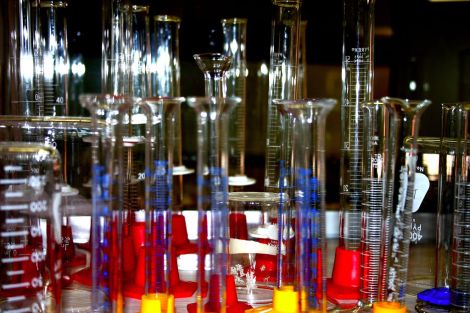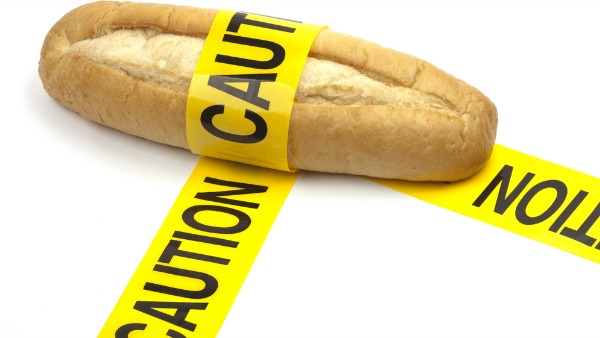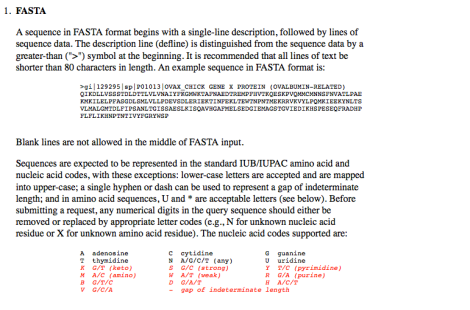What are the true risks of genetically modified foods spreading allergens? I’m looping back today to look more deeply at this. It gets a bit technical, but here’s the deal: A few moments of pain here and there, and in exchange you’ll get past the talking points and come away with a genuine grasp of the risks of GM allergenicity. Deal?
All right. To you, the select and honored 10 percent still here, I bow.
Here’s where I left off: The most obvious difference between transgenics and conventionally bred crops is that, in the former, you often are moving genetic material between unrelated organisms. This raises the possibility that you might move an allergen from, say, a peanut plant, which allergic people know to avoid, into other foods that they presume to be safe. What people are afraid of is that genetic modification might spread allergens into foods where they’d never been found before.
I’d noted that we can test for this relatively easily — that’s how Pioneer Hi-Bred caught allergenic soybeans after adding DNA from a Brazil nut. Doug Gurian-Sherman, of the Union of Concerned Scientists, emailed me after he read that piece. He points out that, while we do a good job screening for known allergens, there are no good tests for unknown allergens from genes that we’ve never eaten before.
The deeper fear is that genetic modification could introduce new proteins into our foods that provoke an immune response in ways we can’t predict or guard against. Here’s Gurian-Sherman:
On the allergen issue, I think your writing trivializes the issue, by saying that “there was the right testing regime.” What I am saying is that there is not this kind of clearly accurate testing regime for possible allergens that do not come from known food sources. The “right tests,” the ones used to identify the Brazil nut allergen, are not applicable to those genes new to foods.
He’s right. The companies actually do three types of testing, which I’ll review in more detail: in vitro, in silico, and digestion. But only the digestion test screens for things that don’t resemble the allergens we already know — and of the three tests, it’s the shoddiest.

WaderIn vitro = test tubes, Petri dishes, and the like.
The in vitro test, done in test tubes (in vitro translates literally to “in glass”), involves dropping the new protein (i.e. the product of the DNA you’re adding) into serum from people with, say, soy allergies (if you were moving soy DNA into another plant). If the antibodies in the serum freak out, you’ve got a problem.
The in silico test, done on computers (i.e. in silicon), compares the composition of the new protein to known human allergens. If there is a similarity, there might be a problem.
With the in silico and in vitro tests, however, there’s one big catch: You are looking for something that resembles known allergens. If something causes a problem in a new way, these tests won’t pick it up.
Finally, companies try to destroy proteins with heat, acid, and stomach enzymes. The rationale is that many allergens are resistant to digestion. But that’s only partly true: There are also allergens that digest easily, and plenty of non-allergens that don’t.
So how big is this specter of the unknown, when it comes to allergies? I asked the American Academy of Allergy, Asthma & Immunology to refer me to an expert on this issue, and they suggested I contact Steve Taylor, co-director of the Food Allergy Research and Resource Program at the University of Nebraska-Lincoln. He basically agreed with Gurian-Sherman:
“Unfortunately, there is no well validated test method to identify novel proteins that might become new allergens,” he wrote.
However, he added, “While the process might not be as robust as many would prefer, I am not aware of any other test methods that I would recommend for use.”
In other words: Companies are doing the best they can. And the lack of better tests is not a big problem, Taylor said, because “the risk of novel allergens in GMOs is actually quite low, in my opinion.”
Why? First, there just aren’t many new proteins in GE food (all allergens are proteins) — you are adding just a couple. It’s much riskier to introduce a new food from another country, each of which contains hundreds of new proteins, Taylor wrote, and yet we subject new foods to less safety testing. (When the first kiwis were shipped into the United States in 1962, they weren’t tested because they were an established food, but, as it turned out, they did cause allergic reactions in some people.)
Furthermore, Taylor said, the new genes in transgenic plants generally express very low amounts of protein (when a gene causes an organism to make a protein it’s called expression). Allergens generally account for more than 1 percent of the proteins in a food, while the proteins expressed by transgenic DNA are much more sparse (though this could change in the future).

KGBKitchenKiwi: full of allergens.
This assertion of low risk didn’t satisfy Bill Freese from the Center for Food Safety, who had also emailed me. He told me Taylor had industry ties — he’d worked for Aventis Agroscience during the StarLink affair — and suggested a few other allergy experts. Two of these people got back to me quickly. The Swiss scientist Heimo Breiteneder shot back a brief email saying that he agreed with Taylor’s assessment. Hugh Sampson, calling between patients at the Mount Sinai Medical Center in New York, agreed as well, but added caveats.
It’s possible that the gene you add might not cause a problem, Sampson said, but the genetic engineering could cause more expression of an allergen already in the plant that nobody had noticed. And there’s the possibility for a kind of immune response that we don’t screen — a T-cell mediated response: “A poison ivy type of response,” he said. “Although I’m not sure how you’d test for that.”
I asked Sampson for his general take: How big was this risk relative to other risks we deem acceptable?
“I think the risk is reasonably low, meaning it’s acceptably low for what we know,” he said. “The question is, do we know everything we need to know?”
As always with GM food, there’s this problem of unknown unknowns.
There’s a bigger issue here as well, both Freese and Gurian-Sherman told me. In my previous post on regulation, I’d looked very narrowly at whether companies were required to do any safety testing. Companies are required to do tests, but Freese thinks they don’t do enough.
“On allergenicity, I’ve repeatedly told EPA to follow the rules laid down by international experts, and they ignored me,” Freese wrote in an email. He says he’d like the government to require companies to adhere to the methods laid out by the WHO-FAO and throw out further test anything with six amino acid subsequences in a row matching an allergen. He’d like the destructive digestion testing to mimic stomach conditions (companies sometimes use greater acidity, and as much as a thousand-fold greater concentration of enzymes). And he’d like tests of the transgenic plant itself, rather than tests on proteins produced by a bacterial surrogate.
This last point requires some explanation: Because it’s very hard to find your specific transgenic protein amid all the other proteins made by a plant, scientists genetically modify bacteria to pump out this protein instead. But context matters with DNA: Adding a gene to a plant’s DNA sometimes causes mutations around the point of insertion. It sometimes causes other, nearby, genes to make more proteins (the issue Sampson had mentioned); furthermore, proteins made in plant cells — unlike bacteria — often get pasted with sugar molecules (glycans) which can affect allergenicity (this is rare, Taylor said). In other words, a gene can make a slightly different molecule, depending on what kind of organism it’s in.
These all seemed like reasonable points, so, after corresponding with Freese, I got in touch with Monsanto to ask how the company controlled for the issues Freese had raised. Scientists from the company responded. I’ll lay out their responses:
Q. Why are in vitro digestion tests so much more acidic and concentrated than human digestion?
A. The goal is not to exactly replicate digestion to derive at some precise endpoint. It is a reasonable simulation to determine relative rates of digestion.
[In other words: The point isn’t to see if it digests in the human stomach, the point is that unstable proteins are more likely to be allergens, and this is how Monsanto tests for stability.]
Q. Why not search for any six amino section of the protein that matches an allergen?
A. Several publications have shown that with a six amino acid window — 70 percent of all protein sequences will yield at least one match. Using a six amino acid window is of no predictive value.
[Instead, Monsanto looks for sequences of eight aminos in a row, which is what the European Food Safety Authority recommends (PDF)].
Q. How can you be sure that the bacteria-made protein will be the same as the protein the gene makes once it’s in the plant?
A. Protein is derived from the plant to use to determine characteristics to validate the use of the E coli-derived protein. Post-translational modification is assessed (i.e. glycosylation [added sugars]) and this has not been an issue.
[OK, here’s what I think that means in English: We get protein made by the plant, and compare it to the protein made by bacteria to make sure they are the same.]
Q. Why not follow the methods laid out by the WHO-FAO?
A. Monsanto follows procedures of CODEX. CODEX was derived by regulatory scientists from around the world that took a decade to adopt.
The Codex Alimentarius frequently references the methods suggested by the WHO-FAO, but is a bit more vague. The WHO-FAO guidelines lay out a strict recipe for just how much acid and pepsin enzyme to use when trying to digest proteins. The Codex just says, “The establishment of a consistent and well-validated pepsin degradation protocol may enhance the utility of this method.”
So where does this leave us? Monsanto says it’s screening everything it makes, using the appropriate methods. (By the way, there’s more to the Monsanto allergy testing — you can see the full email exchange here.) But many eaters of food don’t trust Monsanto to pick its own methods. The FDA has the power to demand certain tests, but the FDA does not make the details of its consultation process public, so it’s unclear what they are asking for. When Gurian-Sherman gained access to some of these FDA documents through the Freedom of Information Act, he found there was no mention of any in silico testing (this for a product submitted back in 1998 — things may well have changed), and no specifics on how the digestion testing was done.
Back in 2001, an article in The New York Times made the case that biotechnology companies would have benefited from a little more regulation, which might have inspired public confidence. “In this area, the U.S. government agencies have done exactly what big agribusiness has asked them to do and told them to do,” Henry Miller, a senior research fellow at the Hoover Institution, who worked on biotechnology at the FDA from 1979 to 1994, told the newspaper. (Though actually my use of the quote here is misleading, Miller was saying something different, see note). The article quoted biotech executives saying that Monsanto, specifically, made a mistake in lobbying for less regulation. Monsanto’s ultimate customers, after all, are eaters, and a lot of eaters want greater transparency.
So why not put the details of testing for transgenic plant allergenicity explicitly into the regulations? Why not open up the FDA process and let the public see there’s no funny business going on? When I asked this of Val Giddings, a former biotech products regulator at USDA, he said it wouldn’t make sense to adopt guidelines when the science is still evolving, and when there’s no surefire way to stop every allergen.
“Problem is, the guidance that we have, even though it ranks with the best out there, is just inadequate to the challenge,” Giddings wrote in an email. “Folks in this field know very well its flaws, and properly are not enthusiastic about adopting an approach that is so far short of what we really need.”
That makes sense: We wouldn’t want regulations to get in the way of better safety measures. But we could also write regulations to allow for easy adjustment when new methods come along.
It’s easy to get lost in the details when scrutinizing potential risks and miss the big picture. It’s important to remember that everything we know suggests the actual hazard here is very small.
As Samuel Lehrer, a Tulane University food-allergy expert, is quoted in the book Mendel in the Kitchen saying: “The allergy tests are so extensive that most of our foodstuffs would never pass them.” And the American Medical Association concluded:
It should be noted that absolute avoidance of all risk is not achievable. Thus the safety assessments that have been developed focus on avoiding risks that are predictable and likely to cause common allergic reactions.
And yet, if Monsanto is doing scientifically rigorous testing anyway (for allergenicity, though you could apply the general thrust of this argument to any health concern), why not just formalize it?
P.S. I hope to write next about intellectual property and the effect of the GM food industry on science, and then move on to other questions: What’s the effect of GM food on the environment? Is it driving monopolization? What about gene flow? There are certainly other health issues that I could cover. The most obvious omission is a discussion of the Bt toxin: Some say it’s poison, some say it’s safe as mother’s milk. I aim to look closely at that.
CORRECTION: Bill Freese favors further screening of transgenic plants that have any six aminos matching a known allergen, not simply throwing them out, as I originally wrote.
CORRECTION: Henry Miller contacted us and said that using his quote in this context mischaracterized his point. The point, he wrote in an email, was not that the biotech industry should have been regulated more, but that it should have been regulated less. He wrote: “This was regulatory capture, to be sure, but not the kind that resulted in too little testing by agribusiness companies or in insufficient government oversight, as the screeds on anti-genetic engineering websites would have you believe. In fact, the industry titans with deep pockets demanded an excessively high regulatory bar that would act as a barrier to competition from start-ups.”
More in this series:
- The genetically modified food debate: Where do we begin?
- The GM safety dance: What’s rule and what’s real
- Genetic engineering vs. natural breeding: What’s the difference?
- Is nature a cradle or a battlefield?
- Genetically modified seed research: What’s locked and what isn’t





